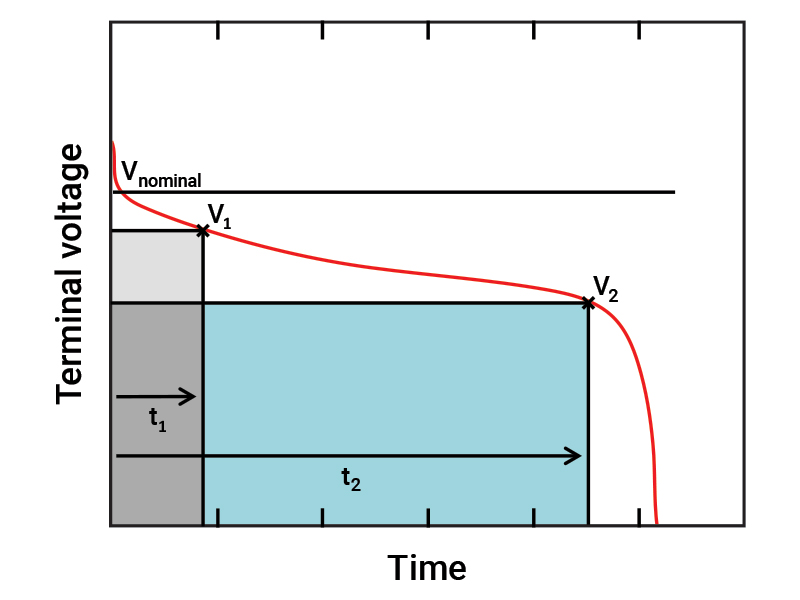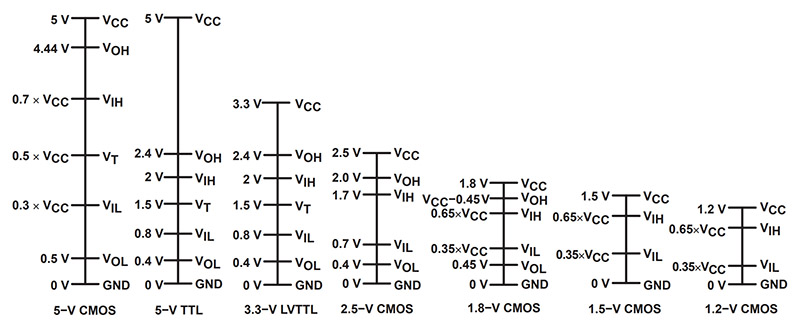SSZT181 march 2021 OPA391 , TLV9001 , TLV9042
In part 1 of this series, I covered issues related to power consumption in single-supply operational amplifier (op-amp) circuits with a sinusoidal output and DC offset. I also discussed two techniques for reducing power consumption in these circuits: increasing resistor sizes and picking an op amp with a lower quiescent current. Both tactics are available in most op-amp applications.
In this installment, I’ll show you how to use low-power op amps with low supply-voltage capabilities.
Saving Power with a Low-voltage Rail
Recall that part 1 included definitions of the average power consumption of a single-supply op-amp circuit with a sinusoidal signal and DC offset voltage using Equations 1 and 2:

I didn’t address the supply rail (V+) in part 1 since it is “typically set by the supply voltages available in the circuit.” While this is true, there are applications where you may be able to use an exceptionally low supply voltage. In such cases, choosing a low-power op amp capable of operating within these supply rails can lead to significant power savings. You can see this in Figure 2, where Ptotal,avg is directly proportional to V+.
Many op amps have minimum supply voltages in the range of 2.7 V or 3.3 V. The reason for this limitation has to do with the minimum voltage needed to maintain the internal transistors in their desired operating ranges. Some op amps are designed to work down to 1.8 V or even lower. The TLV9042 general-purpose op amp, for example, can operate with a 1.2-V rail.
Battery-powered Applications
Many of today’s sensors and smart devices are powered by batteries with terminal voltages that degrade from their nominal voltage rating as they discharge. For example, a single alkaline AA battery has a nominal 1.5-V potential. When first measured without a load, the actual terminal voltage may be closer to 1.6 V. As the battery discharges, this terminal voltage will fall to 1.2 V and further. Designing with an op amp capable of operating down to 1.2 V, instead of a higher-voltage op amp, offers these advantages:
- The op-amp circuit will continue to work for longer, even as the battery approaches the end of its charge cycle and its terminal voltage degrades.
- The op-amp circuit can work with one 1.5-V battery, rather than needing two batteries to form a 3-V rail.
To see why a lower-voltage op amp can get more life from a battery, consider the battery discharge plot shown in Figure 1. Batteries typically have discharge cycles that resemble this curve. The battery’s terminal voltage will begin near its nominal rating. As the battery discharges with time, the terminal voltage will gradually degrade. Once the battery approaches the end of its charge, the terminal voltage of the battery will then decline rapidly. If the op-amp circuit is only designed to work with a voltage near the battery’s nominal voltage, such as V1, then the operating time of the circuit, t1, will be short. Using an op amp capable of working at a slightly lower voltage, however, such as V2, significantly extends the operating life of the battery, t2.
 Figure 1 Typical Discharge Curve of a
Single-cell Battery
Figure 1 Typical Discharge Curve of a
Single-cell BatteryThis effect will vary with battery type, battery load and other factors. Still, it is clear to see how a 1.2-V op amp such as the TLV9042 could get more life out of a single 1.5-V AA battery than a 1.5-V op amp.
Low-voltage Digital Logic Levels
Applications that use low-voltage rails for both digital and analog circuits can also take advantage of low-power op amps with low-supply-voltage capabilities. Digital logic has standard voltage levels from 5 V down to 1.8 V and below (Figure 2). As with op-amp circuits, digital logic becomes more power-efficient at lower voltages. Thus, a lower digital logic level will often be preferable.
To simplify the design process, you may choose to use the same supply-voltage levels for your analog and digital circuits. In this case, having a 1.8-V-capable op amp, such as the high-precision, wide-bandwidth OPA391 or cost-optimized TLV9001, can prove beneficial. To future-proof a design to a potential 1.2-V digital rail, the TLV9042 may be more appropriate. If you choose to take this approach, make sure to clean any noise that may leak into the power pins of the analog devices from the digital circuitry.
 Figure 2 Standard Logic Levels
Figure 2 Standard Logic LevelsConclusion
In this article, we covered applications where low-power op amps with low voltage supply capabilities can bring additional benefits. In the next installment of this series, I’ll take a look at how to use op amps with shutdown circuitry to save power.
Additional Resources
- Catch up on other installments in the “Designing with low-power op amps” series.
- Check out the TI Precision Labs - Op Amps video, “Input and Output Limitations – Output Swing.”
- To learn more about designing an analog circuit for a 1.8-V digital system, see the application report, “Simplifying Design with 1.8-V Logic Muxes and Switches.”